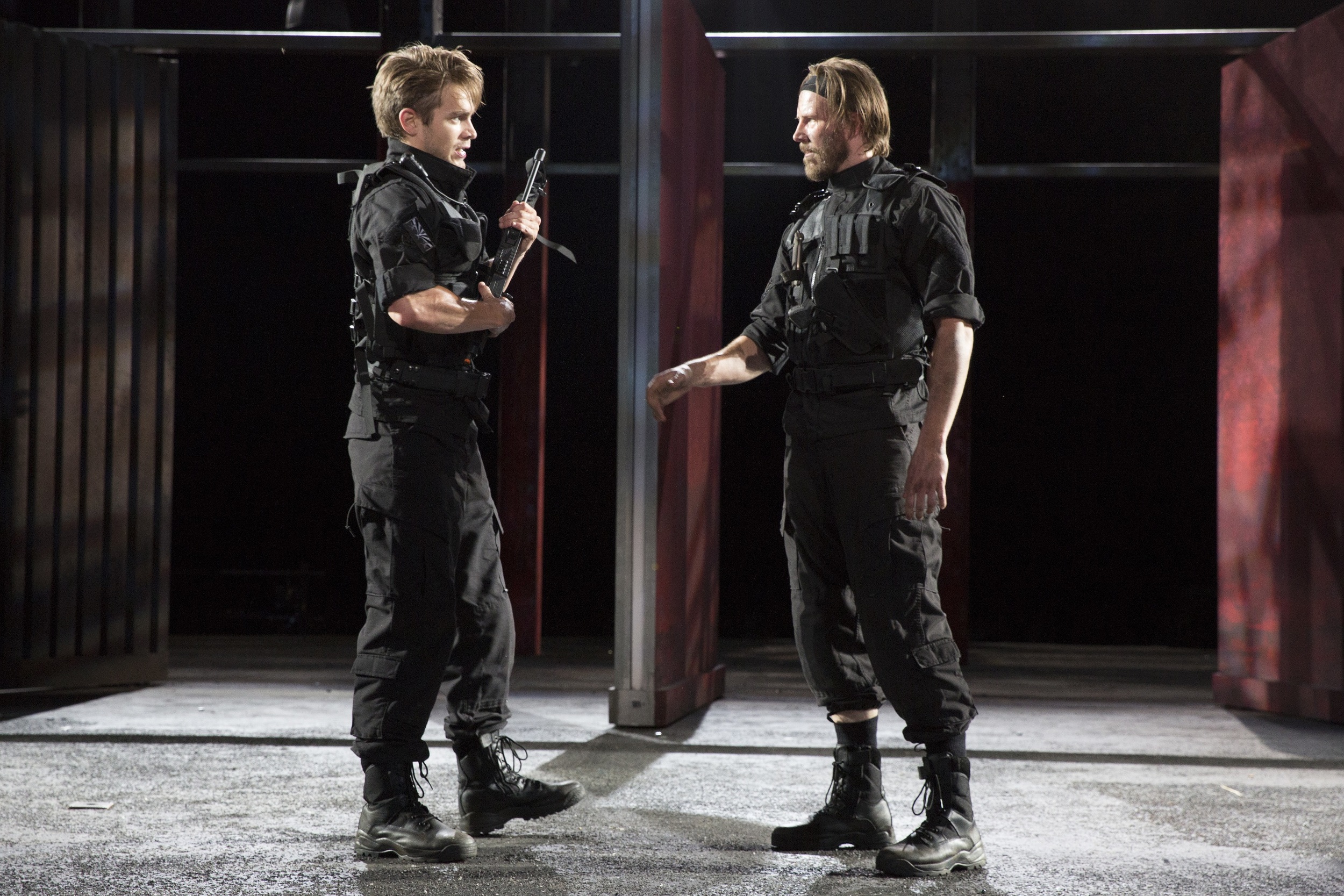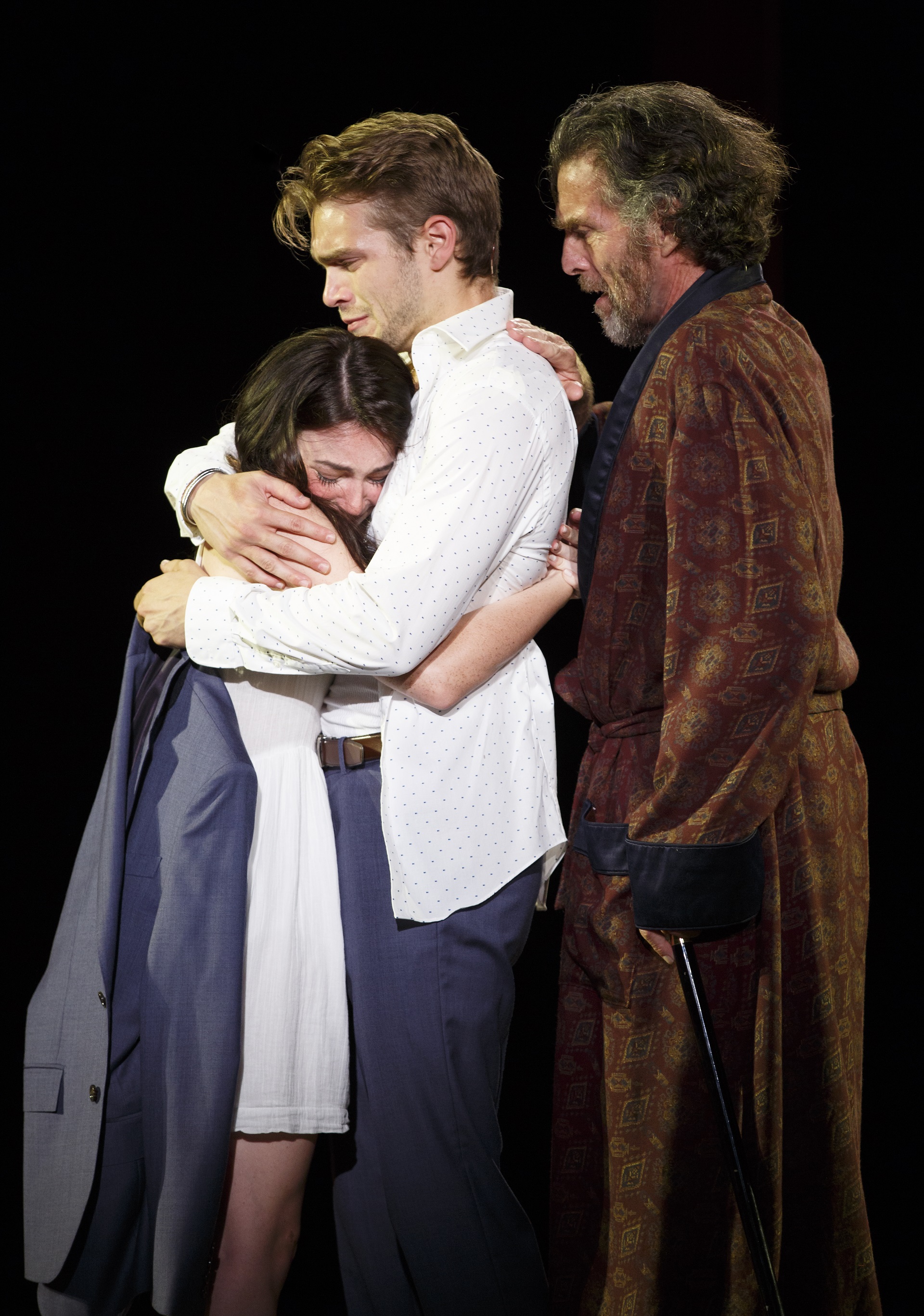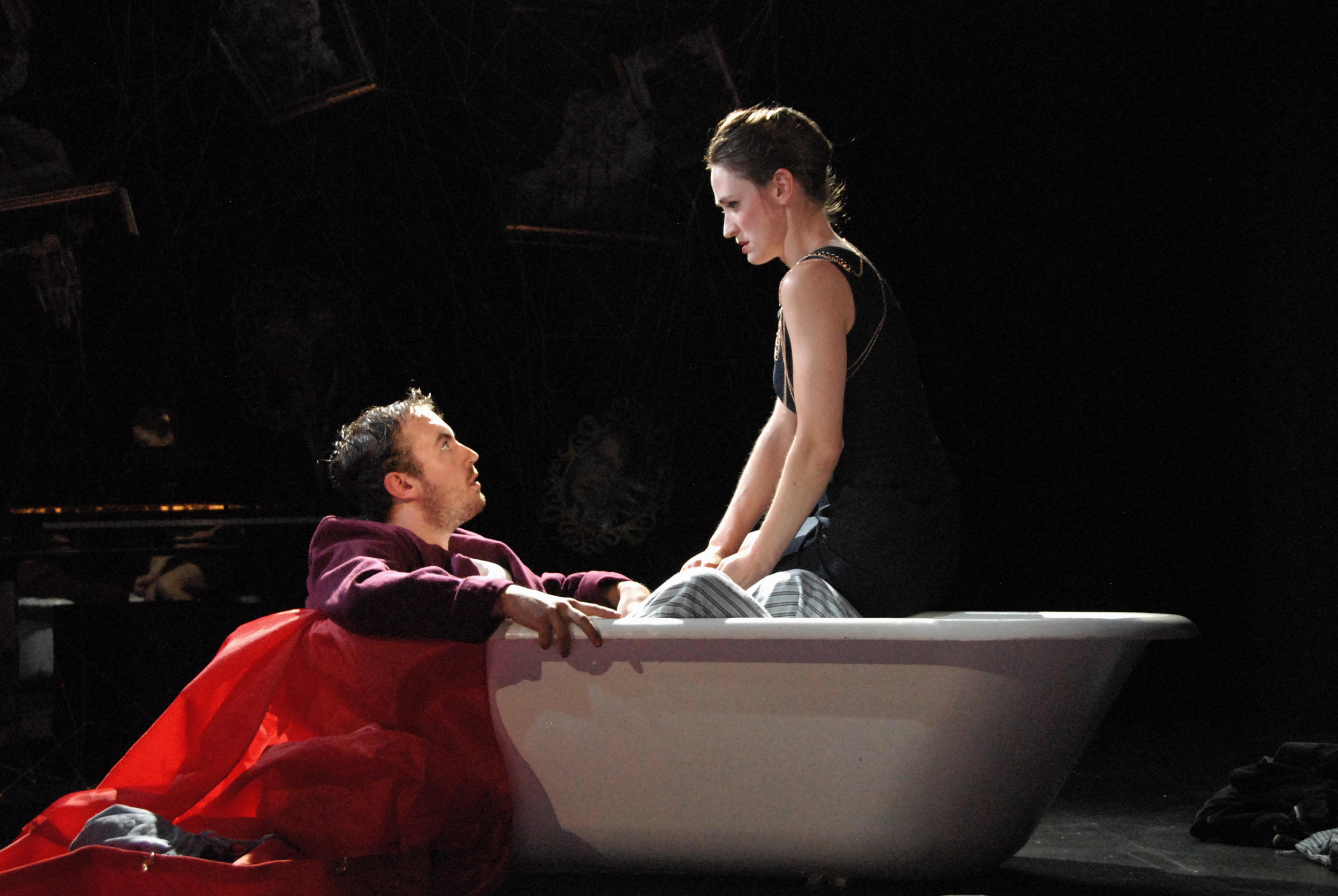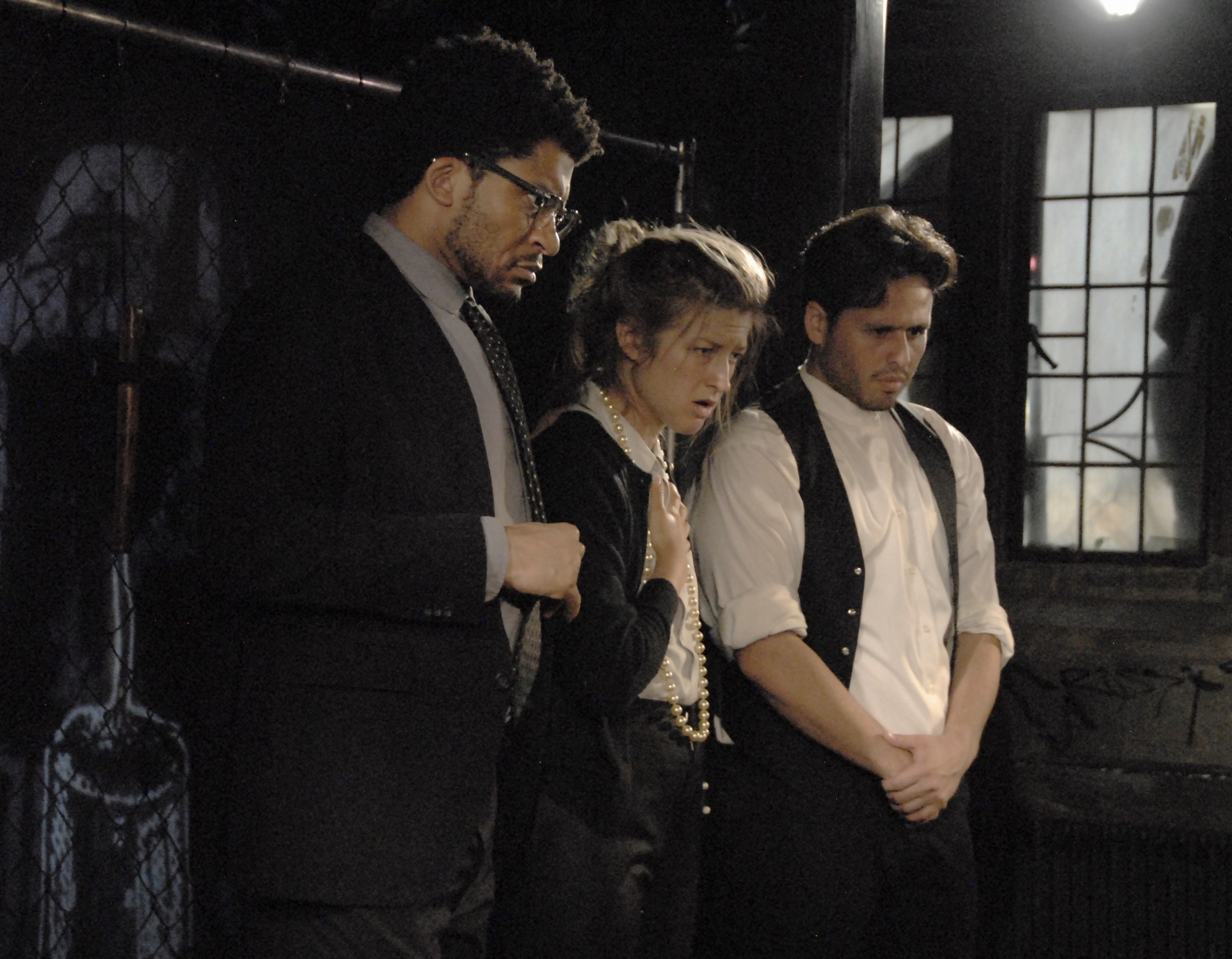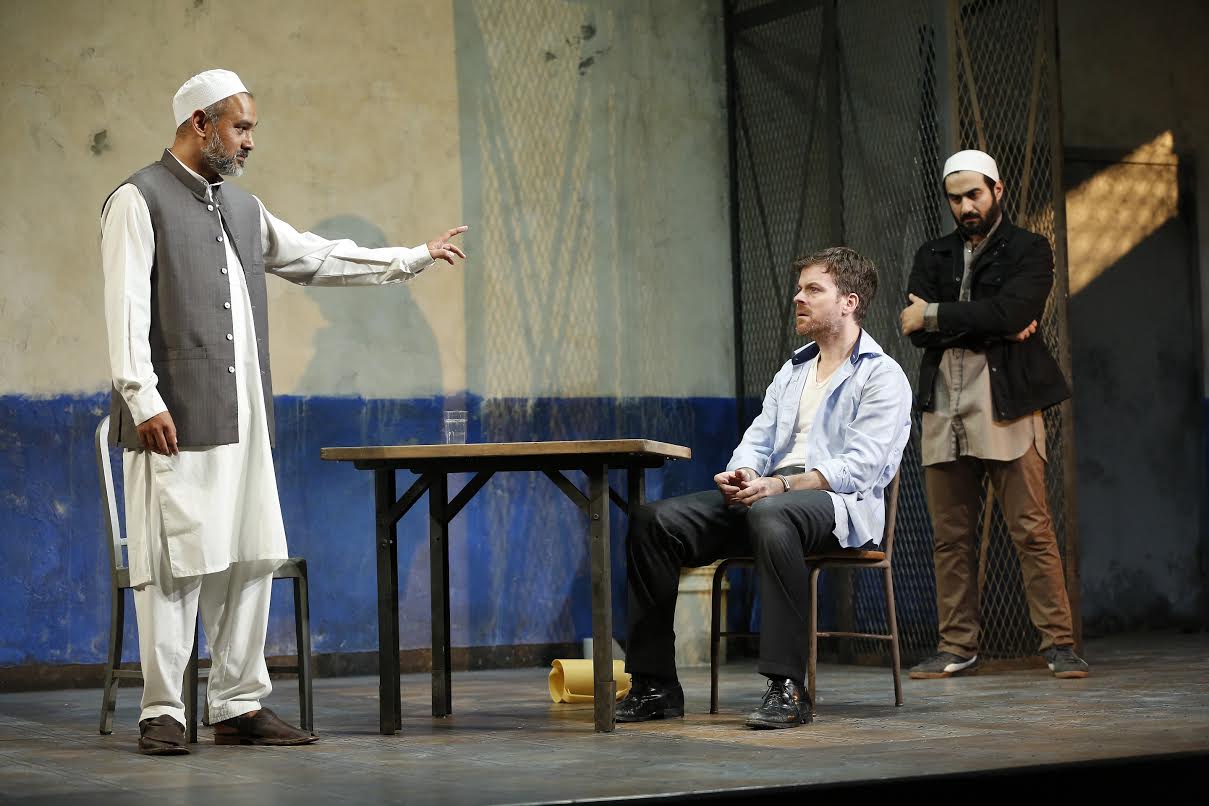Review of The Slow Sound of Snow, Yale Cabaret
A family huddled together in their home, fearing to make a sound. Are they in hiding from oppressive forces? Yes, but in The Slow Sound of Snow, adapted by Jaber Ramezani and Payam Saeedi from Turkish playwright Tuncer Cücenoğlu’s The Avalanche, directed by second-year director Shadi Ghaheri at Yale Cabaret, the force of oppression is the threat of avalanche for these mountain dwellers.
Yashar (Courtney Jamison), Sayrash (Antoinette Crowe-Legacy) (photo: Elizabeth Green)
As the play unfolds, almost in slow motion at times, in a silence so pervasive the breaths of the characters are quite audible in Tye Hunt Fitzgerald’s arresting sound design, its action is intense and hypnotic. Yashar (Courtney Jamison), a pregnant woman, lies on the floor in an abode shared with her husband Talaz (James Udom), her father-in-law, Eli Arkha (Seta Wainiqolo), and his mother Sayrash (Antoinette Crowe-Legacy). The concern of the entire family is when her child will be born. In this country, births are only permitted in the non-winter months, which number at most two or three. The sound of giving birth and the cries of the baby, the folk here believe, will bring on an inevitable avalanche.
The play’s folkloric quality is enhanced by the visitation of a young girl (Stefani Kuo) who flits in and speaks loudly about herself, rattling on into the other characters’ oppressed silence. Her manner is so different from theirs, her role in all this seems questionable. And Kuo doubles as an odd talismanic figure, with a wolf’s head, carrying a white suitcase that, we’re told, Eli Arkha’s wife took with her when she left. Leaving, in what are apparently the trackless wastes of winter in this locality, is deemed “madness.” What isn’t considered madness, in a kind of Shirley Jackson manner, is burying pregnant women alive or smothering them so they don’t give birth during winter. Like a “just so” story or myth or folktale, the situation, in Ramezani and Saeedi’s telling, must be accepted. The more remarkable aspect of the play isn’t in “the set up” per se, but in how it is conveyed.
The logic of the actions is left for us to intuit. It's the relations between the characters, even when almost wordless, that are vivid and persistent. The actors playing the family are uniformly excellent, keeping the situation close to its existential core. The weariness in Crowe-Legacy’s every move; the furtive guilt of Udom’s Talaz, who knows it's his fault his wife will give birth in the interdicted season; the intensity of Wainiqolo’s patriarch who seems so burdened by life, his every move and thought feels constricted; the deep, unspoken misery of Jamison’s Yashar, a woman who should be happy and who seems the most burdened of all. Late in the play, a struggle between the two men and a simultaneous suppression of the younger woman by the elder seem not only matters of life or death but a writhing battle of the life force against an unbearable repression (kudos to fight choreographer Jonathan Higginbotham).
Eli Arkha (Seta Wainiqolo), Talaz (James Udom), Sayrash (Antoinette Crowe-Legacy), Yashar (Courtney Jamison) (photo: Elizabeth Green)
What audiences might find in this tale, beyond some vague notion of what it’s like to live in mountainous wastes, is left open-ended by the play’s rendering. Each character is oddly moving, an exhibit of humanity circumscribed by extremely limited bounds, and each is put across as an actual fact. A telling of the story could seem parable-like; Ghaheri’s staging of the tale, with actors fully inhabiting these roles, is a spellbinding glimpse into that abyss where the living choose to preserve their own lives at whatever cost.
Talaz (James Udom) (photo: Elizabeth Green)
Lighting, sets, costumes, all help create a believable world. And many elements in the telling—the rumble of a possible avalanche, the sound of a baby crying, the musical instrument that Talaz threatens at one point to strum, the visiting girl’s ululation, the dripping of a carcass hung up to dry, the sweet cooing of Talaz and Yashar, Eli Arkha’s attempt to bond with his son by talking of the local circumciser, Sayrash’s long-suffering face, the surreal wolf in a skirt with a suitcase—add up to a fully wrought and fascinating night of theater, not soon forgotten.
The Slow Sound of Snow
By Jaber Ramezani and Payam Saeedi, adapted from The Avalanche by Tuncer Cücenoğlu
Directed and translated by Shadi Ghaheri
Dramaturg: Ariel Sibert; Set Designers: An-Lin Dauber and Stephanie Cohen; Lighting Designer: Carolina Ortiz; Costume Designer: Sophia Choi; Sound Designer: Tye Hunt Fitzgerald; Fight Choreographer: Jonathan Higginbotham; Props Master: Michael Schermann; Stage Manager: Michael Schermann; Producers: Trent Anderson and Armando Huipe
Cast: Antoinette Crowe-Legacy, Courtney Jamison, Stefani Kuo, James Udom, Seta Wainiqolo
Yale Cabaret
October 13-15, 2016
The Cabaret is dark this week, then returns October 27-29, with Current Location, by Toshiki Okada, directed by Josh Goulding, inspired by Japan's attempts to deal with a nuclear disaster in the wake of the 2011 Tohoku earthquake.












































